TV Has Gone To The Dogs
Olivia Barash, BarkvilleTV
 Actress Olivia Barash is our guest. She's here to talk about her new YouTube series called Barkville TV. Olivia will even show off her talents as a voiceover artist.
Actress Olivia Barash is our guest. She's here to talk about her new YouTube series called Barkville TV. Olivia will even show off her talents as a voiceover artist.
Olivia Barash is the founder of BarkvilleTV. BarkvilleTV is the only channel designed to not just entertain, but help save dogs in danger. Olivia has been a proud adopter of several rescue pups throughout her life, and wants to inspire others to do the same. She is currently owned by her dog Pippin.
BarkvilleTV is a YouTube channel starring everyone's best friend. With a mission to inspire adoptions and animal rescues, BarkvilleTV will produce zany and original canine programming as well as curate the very best in doggie videos produced by the public.
Their three flagship web series include:
1. Pup Culture (a.k.a. The Barkville Follies!) Starring The Barkville Players (all rescue doggies, of course), in hilarious parodies of scenes from iconic movies, TV shows, and music videos.
2. Dogumentary brings you heartwarming short documentary films about rescue dogs and everything else pooch-related.
3. Doggie Treats offers a smorgasbord of delightfully quirky, doggie-centered animated shorts.
Olivia produces and directs all of the shows and says she gets to be silly and herself when creating these programs. She also does a lot of the voices, both male and female. This is nothing new to Olivia, because she has been acting since she was a child where she started off doing cartoons and commercials. You may also remember her from Little House on the Prairie and Repo Man.
 Olivia says the ideas for the shows just sort of come to her. She will think of a title and then a scene will be written about it.
Olivia says the ideas for the shows just sort of come to her. She will think of a title and then a scene will be written about it.
One show they did was called Pup Fiction after the movie Pulp Fiction. Olivia states this was not an easy one to do, as the original film is violent with a lot of swear words. Kids like to watch BarkvilleTV, so she knew she had to take it down a bit. She ended up writing a scene about doggy treat bars in Amsterdam instead of the Hash Bars that were mentioned in the original movie. She said it totally worked!
Olivia fell in love with her dog Pippin the first time she saw her picture. She states it was Pippin's large ears that attracted her and she knew right away that that was her dog! After she brought Pippin home, she was shooting a scene with about eleven dogs. Pippin was in her bed, but she got up and started dancing on her hind legs in front of the camera and ruined the scene for the other dogs. As a result, Pippin is now one of the Barkville Players.
BarkvilleTV gives a portion of all proceeds to animal rescue organizations to support dog adoptions. You don't have to be a dog lover to love BarkvilleTV (but you may become one)!
Tune in to BarkvilleTV.
Smelling Like A Dog
Alexandra Horowitz, Being a Dog
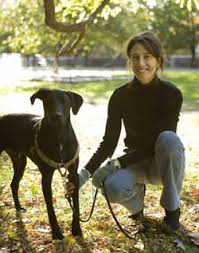 Dog Cognitionist Alexandra Horowitz is back. This time she wants us to know just how well a dog can smell. Did you know they could smell earthquakes? She wants to teach us how to sniff things out just like a dog.
Dog Cognitionist Alexandra Horowitz is back. This time she wants us to know just how well a dog can smell. Did you know they could smell earthquakes? She wants to teach us how to sniff things out just like a dog.
In Alexandra Horowitz's new book, Being A Dog, she states that dogs can have up to a billion olfactory receptor cells in their noses. The dogs that have the most are the ones bred over a long period of time for scent work like Bassetts and Blood Hounds. Regardless, all dogs have hundreds of millions more olfactory receptors than humans.
There are two things that dogs can do with many odors that humans can't. One is that they can detect much less of an odor. They also have more types of receptor cells than humans.
To understand this, Alexandra states we have three types of color vision receptor cells that allow us to see all of the colors we see. But say we had ten or a hundred of these color vision receptor cells, we'd see who knows what - but many different kinds of colors that we couldn't even imagine. That is the case for dogs and smells.
We know that dogs can smell some cancers and sniff out drugs, but there is also a mention in her book that some people claim dogs can smell earthquakes. Alexandra doesn't believe any science has been done earthquakes, in other words, you can't control when there is going to be an earthquake and watch all of the dogs' behavior, but some people claim their dogs forecasts storms and earthquakes. This might be because they pick up on changes in the barometric pressure, which would make for a sudden difference in the odors in the air, which a dog would notice. They don't know that an earthquake is happening, but they notice something is different, which has to do with odors.
 So can we learn from dogs and teach our noses to pick up more scents? Alexandra says definitely! In fact, she was able to do this herself. She states it was her way of becoming more of a dog to see what it might be like to be a dog. She did smell training, which took a lot of practice by sticking her nose in things, bringing things to her nose, sniffing intently and trying to recognize a scent or at least put a word or association to it so that next time she would recognize it more quickly. Alexandra says you need to sniff like you mean it and repeat!
So can we learn from dogs and teach our noses to pick up more scents? Alexandra says definitely! In fact, she was able to do this herself. She states it was her way of becoming more of a dog to see what it might be like to be a dog. She did smell training, which took a lot of practice by sticking her nose in things, bringing things to her nose, sniffing intently and trying to recognize a scent or at least put a word or association to it so that next time she would recognize it more quickly. Alexandra says you need to sniff like you mean it and repeat!
How do cats' sense of smell compare to dogs? Alexandra states that cats do have pretty acute olfaction too, but they aren't trained typically as detection cats. There are a lot of reasons for this, one being that they might not be as cooperative. However, it is really the long snout of a dog that gives them their acute sense of smell. As air is rushed up their nose, it is warmed and humidified, the bad stuff is filtered out and it makes it more likely that when they inhale something, it is going to get all the way to the back of the nose where the receptors are.
Alexandra believes that to a dog there is no such thing as "fresh air," and that every breath of air is loaded with information.
Visit Website
 Multiple Cats, Stress & Illness - Dr. Debbie
Multiple Cats, Stress & Illness - Dr. Debbie
Caring for one cat is easy. Adding a second or third doesn't take much more work. But how many cats are too many? As the number of cats in a home increase, there is greater risk of behavior and health disorders - partly due to higher stress. Problem behaviors like hissing, chasing and soiling outside the litter box are more common in multi-cat homes. But environmental stress contributes to medical disorders too. That's right - stress will make your cat sick.
Defining Feline Stress
Crowding within a home zone creates psychological stress for cats. Cats are social creatures, but don't form social structures like dogs or people. They require room to be away from fellow cats and retreat to their own space. But just having more square footage isn't enough. Cats require a multi-dimensional environment with vertical perching sites and hiding spots.
Household activity, changes in the home and the presence of outdoor cats nearby can rile up your cat's stress level. It's easy for cat owners to fail to detect clues of cat stress in the multi-cat household. A majority of cat communication is nonverbal, so even if you don't hear growling or hissing, your cats can be stressed out.
Even mealtime can be stressful. A study of feral cats has shown that cats hunt and eat their prey preferably away from other cats. Feral cats eat up to 10 to 20 times throughout the daytime and night. So kibble offered to pet cats in a large communal bowl once to two times a day is contrary to innate kitty dining behaviors.
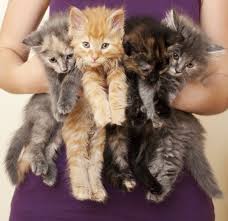 Cat Stress = Sickness
Cat Stress = Sickness
Just as in people, the mind-body connection is at work in cats too. Higher stress results in higher levels of compounds that result in bodily inflammation and suppress immune responses.
Feline interstitial cystitis, also referred to as feline idiopathic cystitis (FIC), is an inflammatory problem of the bladder typified by frequent urinations, straining to urinate, and bloody colored urine. The cause of FIC isn't completely known, but stress is believed to contribute to its development. Cat owners are shocked to learn that those bloody urine accidents may have nothing to do with bacteria, and everything to do with stress.
Other stress related health problems include excess grooming behaviors, obsessive-compulsive behaviors and obesity. Cats in high-density living situations may be prone to upper respiratory outbreaks even if residing solely indoors. Stress and an indoor lifestyle have also been implicated in contributing to obesity, hyperthyroidism, diabetes, and dental disease.
What to Do
It's not that you can't have multiple cats, but you need ensure you can provide the environment for more cats. Consider the feline perspective with living space, feeding, and interaction with other animals and people.
Add cats to the home that share similar personalities. A rowdy cat gets along best with other rowdy cats. A timid cat may be stressed out and fail to thrive in a home where fellow cats are outgoing or rambunctious cats.
Work toward household harmony by following the basic guidelines in resources. Provide ample resources to avoid competition, and therefore stress. Provide one more resource than the number of cats in the home. For two cats you should have three litter boxes and three feeding/watering sites.
Vertical height equals safety to cats, so provide ample perching sites for cats, such as cat trees and window perches. Stick to the rule for one more perching site than kitty in the home. Provide hiding spots like paper bags or cardboard boxes.
Promptly address feline behavior problems when they arise by consulting with your veterinarian or a veterinary behaviorist.
For more information on enriching your indoor cat's environment, visit the Indoor Pet Initiative. This resource is provided by the Ohio State University College of Veterinary Medicine.
Featured veterinarian known as "Dr. Debbie" on national pet radio program, Animal Radio. Ebook author of "Yorkshire Terriers: How to Be Your Dog's Best Friend"; "Pugs: How to Be Your Dog's Best Friend"; "Mini Schnauzers: How to Be Your Dog's Best Friend"; and "Shih Tzu: How to Be Your Dog's Best Friend."
Visit Website
Lucy Pet Foundation
The Mission of The Lucy Pet Foundation is to reduce pet overpopulation and the euthanasia of over 80,000 cats and dogs per week in the United States by having mobile spay/neuter clinics across the country and to support causes that benefit animal welfare. The Lucy Pet Foundation currently has two buses that travel around Southern California focusing on spaying and neutering. These buses are state of the art surgery units. Their next focus is in generating more funds to expand the work of these buses and have more across the country.
 The Lucy Pet Foundation not only offers free and reduced spays and neuters, they also do microchipping, vaccines and de-wormings. Spaying and neutering is not only great for pet population control, but it has been proven that an animal will live on an average of 40-percent longer after having this surgery.
The Lucy Pet Foundation not only offers free and reduced spays and neuters, they also do microchipping, vaccines and de-wormings. Spaying and neutering is not only great for pet population control, but it has been proven that an animal will live on an average of 40-percent longer after having this surgery.
Upcoming Clinics
Free Spay & Neuter for Los Angeles City Residents! Here is a list of upcoming free or reduced fee mobile spay and neuter clinics in California:
October 22: Superior Store, 10211 Avalon Blvd., Los Angeles, CA Spay/Neuter APPOINTMENT ONLY; Vaccine Clinic 10:00am-2:00pm
October 24: East Valley Shelter, 14409 Vanowen St., Van Nuys, CA Spay/Neuter APPOINTMENT ONLY; Vaccine Clinic 10:00am-2:00pm
October 25: West Valley Shelter, 20655 Plummer Street, Chatsworth, CA Spay/Neuter APPOINTMENT ONLY; Vaccine Clinic 10:00am-2:00pm
October 27: Food 4 Less, 5100 N. Figueroa St., Los Angeles, CA Spay/Neuter APPOINTMENT ONLY; Vaccine Clinic 10:00am-2:00pm
October 28: Vallarta Supermarket, 19725 Vanowen St., Winnetka, CA Spay/Neuter APPOINTMENT ONLY; Vaccine Clinic 10:00am-2:00pm
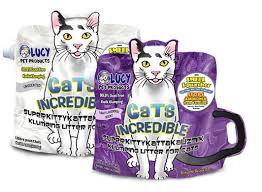 County and City Vouchers accepted. But remember, you must get on a list to have your pet seen at these locations. Please call The Lucy Pet Foundation toll free at 1-855-499-5829 or Visit Website to schedule an appointment, or register at the events.
County and City Vouchers accepted. But remember, you must get on a list to have your pet seen at these locations. Please call The Lucy Pet Foundation toll free at 1-855-499-5829 or Visit Website to schedule an appointment, or register at the events.
Lucy Pet Products, Inc. is a family owned and operated company based in Thousand Oaks, California. Lucy Pet Products are "Products With a Cause." Part of the proceeds from the sales of Lucy Pet Products are used to help fund The Lucy Pet Foundation. Their products can be found in pet specialty stores across the USA and are exported worldwide, or Visit Website.
Visit Website
Seven Cat Facts To Make You A Cat Fanatic
Robert Semrow, Animal Radio Listomania
 So I have a number of friends who are cat crazy and I mean that in a positive way. They know so much about cats that it's more than a passion, it's an obsession. And if you are going to have an obsession, being a Cat Fanatic is probably one of the safer obsessions around. One of the things my cat friends like to do is try to amaze me with cat facts. My recent inquisition in front of my cat people made me realize that there are some really cool cat facts that most of us don't know.
So I have a number of friends who are cat crazy and I mean that in a positive way. They know so much about cats that it's more than a passion, it's an obsession. And if you are going to have an obsession, being a Cat Fanatic is probably one of the safer obsessions around. One of the things my cat friends like to do is try to amaze me with cat facts. My recent inquisition in front of my cat people made me realize that there are some really cool cat facts that most of us don't know.
So I'm going to share 7 Cat Facts To Make You A Cat Fanatic.
To begin with, cats have beautiful smiles, when they show them to you. If you were fortunate to catch a look inside at their chompers, you'd see approximately 30 teeth in an adult cat. That's a lot of teeth for such a small area.
If you find yourself trying to herd a Clowder, you are most likely going to be very frustrated. What's a Clowder, well, it's a group or cluster of cats. Also, don't forget that cats start their lives as part of a Kindle, which used to mean a group of kittens, though many of you probably thought of something much different.
Here's a gem for all of you who wonder why that cat stuck up in a high place will descend backwards, instead of head forward. It's because cat's claws are all permanently point in one way. To grip, they must descend backwards. So firefighters and superheroes take note, if the cat is facing forward, it's not about to come down from it's perch, unless it's doing it with a leap of faith.
Speaking to baseball fans, if you call for a lefty from the cat bullpen, you are probably signaling for a male as males tend to be left-pawed and females tend to be right-pawed.
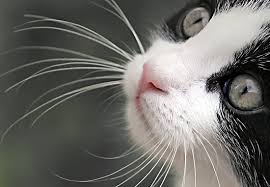 Cat's are sometimes described as twitchy, which may have something to do with how fast their hearts are beating, as a cat's heart beats nearly twice as fast as a human heart, between 110 to 140 beats a minute.
Cat's are sometimes described as twitchy, which may have something to do with how fast their hearts are beating, as a cat's heart beats nearly twice as fast as a human heart, between 110 to 140 beats a minute.
Cat's whiskers are more than decorative and beautiful, they are functional and help cats detect objects and navigate in the dark. Interesting side note is that Cat Whisker Fatigue is a real thing and can lead to avoidance of coming in to contact with objects that brush irritate their whiskers. So if you are putting your cat food in a deep bowl, and your cat is avoiding it, they might be showing their whisker fatigue.
Finally, and if your dogs are listening to this you may need to turn this up, cats have better hearing than dogs! Cats hear higher frequencies than humans and dogs and can pinpoint a sounds origin with extreme accuracy. I guess I should stop muttering things under my breath since they are likely to hear it anyway!
All joking aside, cats are animal world superstars with so many special and unique things; it's easy to see why the Internet is filled with cat videos. Cat Fanatics, share your favorite cat facts on our Animal Radio Facebook Page.
Visit Website
 The Dogfather's Grooming Tip with Joey Villani
The Dogfather's Grooming Tip with Joey Villani
Remove Urine Smell From Dogs
As our dogs age and become seniors, they often become incontinent and urinate on themselves. This odor can be very strong and hard to get out and if you have a white dog you may also see some staining.
While you might not be able to remove 100-percent of the odor, there is an easy to fix to remove most of it by neutralizing the odor.
One of the best odor removers that you can use is white vinegar. White vinegar neutralizes uric acid and breaks it down.
 Start by bathing your dog like you normally would. Next make a mixture of a gallon of water to one-quarter cup of white vinegar. Distilled water works better than tap water, as some tap waters contain minerals that will discolor a light-colored dog.
Start by bathing your dog like you normally would. Next make a mixture of a gallon of water to one-quarter cup of white vinegar. Distilled water works better than tap water, as some tap waters contain minerals that will discolor a light-colored dog.
Next, saturate the area on your dog by spraying it with this mixture. Work it in and then towel dry your pet. Be aware that some pets may become a little bit sensitive to this. If you notice that their skin becomes a little irritated, dilute the mixture by adding a little more water the next time you use it.
You will notice almost immediately that the smell is almost gone. You may be left with a strong vinegar smell, but this smell will go away as the pet dries.
 Animal Radio News - Lori Brooks
Animal Radio News - Lori Brooks
Pet Vet Bills Are Through The Roof
If you feel like your pet's vet bills are through the roof, you're not alone! It seems the animal health care system suffers from many of the same problems as human medical care, according to a new report from researchers at Stanford and the Massachusetts Institute of Technology. They found that some features of the systems are shockingly similar, in that both have seen a huge increase of dollars spent on end-of-life care. There is no denying that we are usually more than willing to shell out a piece of our savings to keep our furry friends healthy. According to the American Pet Products Association, pet owners in the U.S. spent $15.4 billion on veterinary care last year and that spending on pets' medical bills has outpaced that of humans. Between 1996 and 2012, data from the Consumer Expenditure Survey shows the percentage of physicians jumped by 40-percent, while the number of veterinarians nearly doubled. Still, fewer than 1-percent of pet owners purchase a pet health insurance policy.
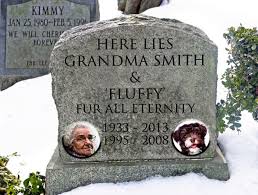 You Can Now Be Buried With Your Pet in NY
You Can Now Be Buried With Your Pet in NY
Pet owners in New York can now take their trusted furry companions with them to the grave since the governor has signed legislation making it legal for the cremated remains of pets to be interred with their owners at any of the approximately 1,900 not-for-profit cemeteries in New York that are regulated by the state. The new law, which does not apply to cemeteries owned or operated by religious associations or societies, comes three years after the state made it permissible for pet cemeteries to accept the cremated remains of humans wishing to spend eternity with their pets. Supporters of the measure cited statistics showing that 62-percent of U.S. households have a pet. Among the most famous Big Apple pet owners who wanted to be buried with their pets was Leona Helmsley, the hotel magnate dubbed "The Queen of Mean" who died in 2007 and had in her will that she wanted her pampered pooch "Trouble" interred with her in the 12,000-square-foot family mausoleum. Trouble died five years ago, but there were no laws in the state that allowed them to be buried together.
Should I Let My Pet Sleep With Me?
If you kick your dog off the bed every night, you might want to stock up on apology treats. A study of 150 people conducted by the prestigious Mayo Clinic on Sleep has found that, contrary to popular belief, sleeping with your pet doesn't actually disrupt your sleep as much as you might think. In fact, it offers people a sense of security, helping them get a better night's sleep. Twenty percent of those in the study said their pets disturbed their sleep, but 41-percent believed having a pet in the bedroom actually helped them sleep better. The authors of the study said, "Some people find that sleeping with their pet actually helps them feel cozy." An interesting finding was that most people who complained about pets disturbing sleep lived with multiple pets.
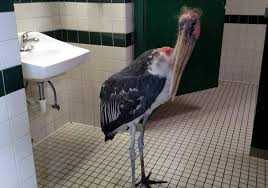 Storks Ride Out Hurricane in Public Restroom
Storks Ride Out Hurricane in Public Restroom
Storks at a zoo in Florida found refuge in a bathroom as Hurricane Matthew passed through the area recently. St. Augustine Alligator Farm Zoological Park shared photos as their staff attempted to assure that all of the facility's animals were kept safe indoors from the hurricane. One photo with the caption, "No species discrimination in this bathroom!" showed a marabou stork standing on the tiled restroom floor between a sink and an open stall door, as it waited for the storm to pass. It was a pretty tough job for the park, as every bird and mammal was moved to safety indoors. All venomous snakes had to be double contained, tortoises and baby crocs were moved indoors in various sized tubs and the storks got to ride out the storm in the park's public restroom.
Is Your Pet Insured?
More than 1.2 million dogs and cats in the U.S. are insured. However, that is less than 1-percent of the total number of dogs and cats nationwide, according to Pets Best Insurance Services State of the Pet Insurance Industry Report. They found that more than 82-percent of pet insurance customers reported that they consider themselves "pet parents," rather than simply "pet owners," which speaks to the human-animal bond and how Americans' relationships with pets has evolved over the past few decades. Pets are truly considered members of the family, not simply "the family pet." A notable trend they're seeing among customers is that the fastest growing age group is now 25 to 34-year-old millennials. This increasing trend among millennials might speak to another finding in the study, which shows that more than half of pet insurance customers, 52-percent of them, do not have human children. Seventy-eight percent of pet insurance customers are female, which aligns with the growing trend of young women choosing dogs over motherhood. Now the really good news, the report found that 40-percent of pet insurance customers adopted their pet from a shelter or rescue, with another 6-percent taking in pets they found as strays. The study also found that pet owners with insured animals visit their veterinarian more often.
 Do You Believe in Animal Afterlife?
Do You Believe in Animal Afterlife?
The first study to systematically explore beliefs about animal afterlife has been published. With around 70-percent of U.S. households owning pets, the study marks a new insight into a largely unexplored area of American spirituality. The authors surveyed 800 participants, examining how demographic factors including sex, race, age, geographic region, religious beliefs and pet ownership all affect an individual's beliefs about animal afterlife. Results showed that people who believe in an afterlife for humans are substantially more likely to believe in an afterlife for animals. Fifty-nine percent of participants believed in human afterlife and 75-percent of those individuals also believed in animal afterlife. The survey further indicated that members of certain demographic categories are more likely to believe animals have a life after death. Women, American Indians, African Americans, Buddhists, residents of the South and pet owners are all more likely to believe in animal afterlife. They also found people held different beliefs for different animals. In general, dogs, cats, and horses were rated the most likely to experience an afterlife, whereas insects, fish, and reptiles were rated the least likely.
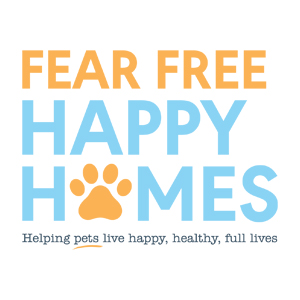
NEWS UPDATE brought to you by Fear Free. "Take the 'pet' out of 'petrified'" and get pets back for veterinary visits by promoting considerate approach and gentle control techniques used in calming environments.
 Listen to the entire Podcast of this show (#881)
Listen to the entire Podcast of this show (#881)



 Actress Olivia Barash is our guest. She's here to talk about her new YouTube series called Barkville TV. Olivia will even show off her talents as a voiceover artist.
Actress Olivia Barash is our guest. She's here to talk about her new YouTube series called Barkville TV. Olivia will even show off her talents as a voiceover artist. Dog Cognitionist Alexandra Horowitz is back. This time she wants us to know just how well a dog can smell. Did you know they could smell earthquakes? She wants to teach us how to sniff things out just like a dog.
Dog Cognitionist Alexandra Horowitz is back. This time she wants us to know just how well a dog can smell. Did you know they could smell earthquakes? She wants to teach us how to sniff things out just like a dog. So can we learn from dogs and teach our noses to pick up more scents? Alexandra says definitely! In fact, she was able to do this herself. She states it was her way of becoming more of a dog to see what it might be like to be a dog. She did smell training, which took a lot of practice by sticking her nose in things, bringing things to her nose, sniffing intently and trying to recognize a scent or at least put a word or association to it so that next time she would recognize it more quickly. Alexandra says you need to sniff like you mean it and repeat!
So can we learn from dogs and teach our noses to pick up more scents? Alexandra says definitely! In fact, she was able to do this herself. She states it was her way of becoming more of a dog to see what it might be like to be a dog. She did smell training, which took a lot of practice by sticking her nose in things, bringing things to her nose, sniffing intently and trying to recognize a scent or at least put a word or association to it so that next time she would recognize it more quickly. Alexandra says you need to sniff like you mean it and repeat! Multiple Cats, Stress & Illness -
Multiple Cats, Stress & Illness - Cat Stress = Sickness
Cat Stress = Sickness
 County and City Vouchers accepted. But remember, you must get on a list to have your pet seen at these locations. Please call The Lucy Pet Foundation toll free at 1-855-499-5829 or
County and City Vouchers accepted. But remember, you must get on a list to have your pet seen at these locations. Please call The Lucy Pet Foundation toll free at 1-855-499-5829 or  So I have a number of friends who are cat crazy and I mean that in a positive way. They know so much about cats that it's more than a passion, it's an obsession. And if you are going to have an obsession, being a Cat Fanatic is probably one of the safer obsessions around. One of the things my cat friends like to do is try to amaze me with cat facts. My recent inquisition in front of my cat people made me realize that there are some really cool cat facts that most of us don't know.
So I have a number of friends who are cat crazy and I mean that in a positive way. They know so much about cats that it's more than a passion, it's an obsession. And if you are going to have an obsession, being a Cat Fanatic is probably one of the safer obsessions around. One of the things my cat friends like to do is try to amaze me with cat facts. My recent inquisition in front of my cat people made me realize that there are some really cool cat facts that most of us don't know.  Cat's are sometimes described as twitchy, which may have something to do with how fast their hearts are beating, as a cat's heart beats nearly twice as fast as a human heart, between 110 to 140 beats a minute.
Cat's are sometimes described as twitchy, which may have something to do with how fast their hearts are beating, as a cat's heart beats nearly twice as fast as a human heart, between 110 to 140 beats a minute.
 The Dogfather's Grooming Tip with
The Dogfather's Grooming Tip with  Start by bathing your dog like you normally would. Next make a mixture of a gallon of water to one-quarter cup of white vinegar. Distilled water works better than tap water, as some tap waters contain minerals that will discolor a light-colored dog.
Start by bathing your dog like you normally would. Next make a mixture of a gallon of water to one-quarter cup of white vinegar. Distilled water works better than tap water, as some tap waters contain minerals that will discolor a light-colored dog. Animal Radio News -
Animal Radio News -  You Can Now Be Buried With Your Pet in NY
You Can Now Be Buried With Your Pet in NY
 Storks Ride Out Hurricane in Public Restroom
Storks Ride Out Hurricane in Public Restroom
 Do You Believe in Animal Afterlife?
Do You Believe in Animal Afterlife?
